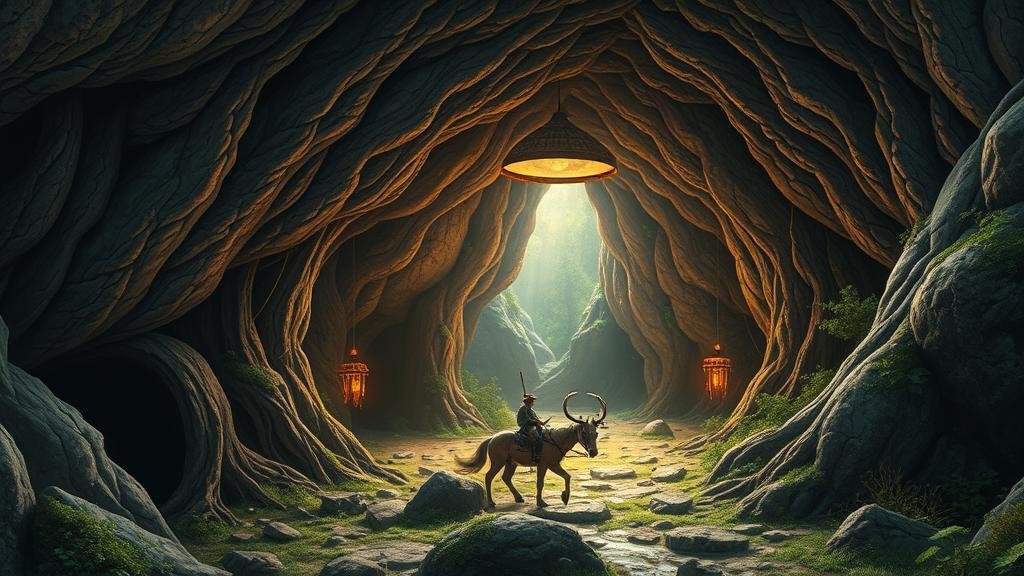Documenting myths and legends surrounding subterranean ecosystems.
Documenting Myths and Legends Surrounding Subterranean Ecosystems
Subterranean ecosystems, often hidden away beneath the surface of the Earth, have long captivated human imagination. From ancient lore to modern interpretations, myths and legends surrounding these underground worlds reveal significant insights into cultural beliefs, environmental challenges, and the human fascination with the unknown. This article explores various myths and legends, their cultural contexts, and the intriguing elements of science that accompany these underground realms.
The Mythical Underworlds
Throughout history, many cultures have delineated the subterranean realms as domains of gods, spirits, and mythical creatures. e myths often reflect societal fears, hopes, or the mysteries of nature. Some notable examples include:
- The Greek Underworld: In Greek mythology, Hades represented not only the god of the dead but also the realm itself. The Underworld was described as a shadowy place where souls resided after death, incorporating places like Elysium, a rewarding paradise, and Tartarus, a pit of torment.
- The Chinese Diyu: In Chinese tradition, Diyu or Hell is a complex subterranean realm with various levels where souls are judged and punished. This system mirrors earthly justice, incorporating a notion of karmic retribution.
- The Native American Underworld: Numerous Native American tribes, such as the Hopi and Zuni, hold beliefs in an Underworld inhabited by ancestors. In their creation myths, the emergence of life begins from a subterranean realm, often depicted as a place of transformation and renewal.
Legends of Hidden Civilizations
Legends about hidden civilizations beneath the Earth have also emerged, fueling the imagination and curiosity about what lies beneath the surface. Such tales often suggest advanced societies that possess great knowledge or power. Examples include:
- The City of Agartha: A legendary city believed to exist deep within the Earth, Agartha is often associated with utopian ideals and advanced technology. Some stories suggest it to be inhabited by an enlightened race that possesses the secrets of life.
- Shangri-La: Though often associated with a mythical valley, some interpretations suggest that Shangri-La could also refer to a hidden underground paradise, representing idealism and environmental harmony.
- The Mole People: Modern urban legends speak of Mole People who purportedly live in the subway systems and sewers of major cities like New York. These individuals are often romanticized as outcasts who create their own subterranean societies.
Scientific Perspectives on Subterranean Ecosystems
Beyond the myths and legends, scientific exploration reveals authentic subterranean ecosystems teeming with life. study of these ecosystems has garnered significant attention, unveiling remarkable adaptations of organisms and the intricacies of their environments.
- Cave Ecosystems: Caves are unique ecosystems that harbor specialized species, including cave-dwelling fish like the Mexican tetra, which have adapted to life in total darkness.
- Subterranean Flora: Certain plant species, such as the bulbous plants of the Amorphophallus genus, have evolved to thrive in dark, nutrient-rich soil, illustrating adaptation and diversity.
- Microbial Life: The presence of extremophiles–microbes that thrive in harsh conditions–has prompted research into biotechnological applications, including wastewater treatment and bioremediation.
Real-World Applications and Environmental Concerns
The fascination with subterranean ecosystems has practical implications as well. Understanding these ecosystems can contribute to several fields, including environmental management, archaeology, and even medicine.
For example, the study of extremophiles has led scientists to explore their applications in pharmaceuticals, as some compounds produced by these microorganisms exhibit antibiotic properties. Plus, the protection of subterranean habitats is crucial for maintaining biodiversity and ecosystem services.
Conclusion
Myths and legends surrounding subterranean ecosystems serve as cultural expressions that encapsulate deep-seated beliefs and fears, while scientific exploration reveals an intricate world rarely seen. By documenting these narratives alongside empirical knowledge, we can better appreciate both the stories that shape our understanding of the world and the ecological wonders hidden below our feet.
As we move forward, encouraging awareness and exploration of these subterranean environments will help bridge the gap between myth and science, leading to a richer understanding of our planets hidden treasures.



